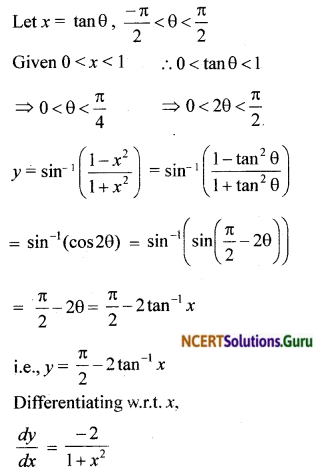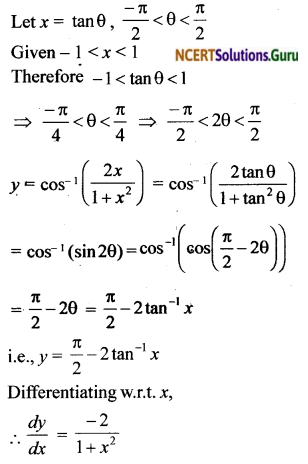NCERT Solutions for Class 12 English Flamingo Chapter 4 The Rattrap is a detailed account of what you will learn in The rattrap Chapter 4 Class 12 English. To successfully pass CBSE Class 12 English exam and get an excellent grade on your report card at the end of it all you need a thorough understanding and comprehension of NCERT Solutions for Class 12 English Flamingo Chapter 4 The Rattrap which we have made sure covers everything important! Check out The Rattrap Class 12 English sample questions.
The Rattrap NCERT Solutions for Class 12 English Flamingo Chapter 4
The Rattrap NCERT Text Book Questions and Answers
The Rattrap Think as you read
Question 1.
From-where did the peddler get the idea of the world being a rattrap?
Answer:
The peddler once got lost in the woods, and thought of his rattraps, when the idea of the world being a rattrap struck him.
Question 2.
Why was he amused by this idea?
Answer:
The peddler believed that the world with all its riches and joys, food and shelter appears as a rattrap to tempt people. He was amused to think of many other people he knew, who were already caught in the trap, and some others who were circling around the bait.
Question 3.
Did the peddler expect the kind of hospitality that he received from the crofter?
Answer:
The peddler did not expect to receive the kind of hospitality he received from the crofter. He usually used to meet sour faces and was turned away without even a word of kindness.
Question 4.
Why was the crofter so talkative and friendly with the peddler?
Answer:
The crofter was so talkative and friendly with the peddler because he always lived alone and he needed company. He wanted to share his feelings with somebody. The peddler had sufficient time and he had to pass the night, so he listened peacefully.
Question 5.
Why did he show the thirty kronors to the peddler?
Answer:
The crofter felt proud of the cow that gave him enough milk to support him. So he told the peddler that he had got thirty kronors from the creamery as the payment of previous month’s supply. However, he felt that the peddler did not believe him. Thus, he showed the money to convince him.
Question 6.
Did the peddler respect the confidence reposed in him by the crofter?
Answer:
The peddler had no respect for the crofter’s confidence reposed in him. In fact, he came back, smashed the windowpane, and stole the money.
Question 7.
What made the peddler think that he had indeed fallen into a rattrap?
Answer:
After stealing the crofter’s money, the peddler believed that it was not safe to walk along the public highway. So he went into the woods. He walked there but could not get out of it. So he thought that he had fallen into a rattrap. The forest with its trunks, branches and under growths appeared to him like an impenetrable prison.
Question 8.
Why did the iron master speak kindly to the peddler and invite him home?
Answer:
The ironmaster considered the peddler as an old regimental comrade, who had fallen on evil days. So he invited the peddler to come home with him.
Question 9.
Why did the peddler decline the invitation?
Answer:
The peddler was afraid as he was carrying stolen money with him. The peddler knew that the ironmaster had mistaken him for an old regimental comrade and feared that the ironmaster would send him to the police. He felt it was like walking into a lion’s den.
Question 10.
What made the peddler accept Edla Willmansson’s invitation?
Answer:
The peddler accepted her invitation as she spoke kindly to him. She realised that he was afraid. Thus, she assured him that no harm would come to him and he was at liberty to leave whenever he wanted.
Question 11.
What doubts did Edla have about the peddler?
Answer:
Edla was kind, trusting and compassionate. She had promised joy and festivities to
the peddler on Christmas eve. Therefore, she entertains the peddler even after she knew the truth about him. Edla thought that the peddler had stolen something or had escaped from jail. She did not believe him to be educated, thus, she did not think of him as her father’s old regimental comrade.
Question 12.
When did the ironmaster realise his mistake?
Answer:
The ironmaster had seen the peddler in the dim light of the furnace. When the peddler came well-groomed in the broad daylight, the ironmaster realised that he was mistaken.
Question 13.
What did the peddler say in his defence when it was clear that he was not the person ‘the ironmaster had thought he was?
Answer:
The peddler told that he never pretended to be what he was not. He only desired to be permitted to sleep in the forge for the night. He had declined the ironmaster’s invitation, again and again. He even wanted to put on his rags again, and go away.
Question 14.
Why did Edla entertain the peddler even after she knew the truth about him?
Answer:
Edla served him not as her father’s old comrade. She always thought him to be a homeless poor tramp. She wanted to feed supper to the poor man on Christmas eve. Thus, she let him stay.
Question 15.
Why was Edla happy to see the gift left by the peddler?
Answer:
Edla was the daughter of the ironmaster. She had invited the peddler to her house, but when she was in church, she came to know that the peddler had stolen the money from the crofter’s house. She was worried that he might have stolen things from her house too. But later, she was overjoyed to see the gift and all things untouched.
Question 16.
Why did the peddler sign himself as Captain von Stahle?
Answer:
The ironmaster had been mistaken when he took the peddler for his old comrade. In reality, he felt he was Captain von Stahle, and signed his name on the letter as that. All this was due to Edla’s behaviour, who made him feel like a real captain.
The Rattrap Understanding the Text
Question 1.
How does the peddler interpret the acts of kindness and hospitality shown by the crofter, the ironmaster and his daughter?
Answer:
The peddler had been a man selling small rattraps made of wire. All around, he led a sad and monotonous life of a vagabond. He knocked at the door of the house of the crofter, who was an old man without a wife and children. He showed kindness and hospitality unexpected by the peddler. Still, the rattrap peddler stole his thirty kronor. So he betrayed the confidence reposed in him by the crofter. Later, the ironmaster thinking him to be an old acquaintance invited him to his house. The peddler went to his house thinking that the ironmaster might give him a couple of kronors. He did not reveal his true identity.
Edla Willmansson, the ironmaster’s daughter asked him to come to her home in a very compassionate and friendly manner. He agreed to go to their home. But while he was riding to the manor house, he had “evil forebodings”. He felt guilty for stealing the crofter’s money. The ironmaster, after realising that he was not the captain, told him to go out of the house immediately. However, the insistence of Edla allowed him to spend the Christmas evening in their house. The peddler wondered about it. However, he interpreted it to be her nobleness, kindness and generosity.
Question 2.
What are the instances in the story that show that the character of the ironmaster is different from that of his daughter in many ways?
Answer:
There are several instances in the story to prove that the ironmaster’s character is different from his daughter’s in many ways. The ironmaster mistook the peddler to be an old acquaintance. So he invited him to his house to spend Christmas evening. The peddler, however, declined his invitation. So the ironmaster sent his daughter with the hope that she would have better ways of persuasion. The compassionate manner of the daughter won the confidence of the peddler, who agreed to go to her home.
However, as the valet bathed the peddler, cut his hair and shaved him, and dressed him in a good-looking suit, the ironmaster had the realisation that he was someone else. The ironmaster, who could be called impulsive, told him to get out of his house immediately. However, his daughter said that he should stay with them that day, for Christmas. She felt sympathetic towards ‘the poor hungry wretch’. She believed that he could have a day of peace with them just once in the whole year. She even told him to take his father’s suit as a Christmas gift. Her attitude changed the peddler who left with her the money he had stolen.
Question 3.
The story has many instances of unexpected reactions from the characters to others’ behaviour. Pick out instances of these surprises.
Answer:
In ‘The Rattrap’, there are instances of unexpected reactions from the characters to others’ behaviour. Walking along with the road one evening, the peddler saw a light grey cottage by the roadside. He sought shelter for the night. Usually, he was met by ‘sour faces’. However, unexpectedly the house owner, the crofter, an old man without a wife or children, greeted him. He showed hospitality by serving food and taking care of him. Then the peddler was entrapped in the forest. Over there, he sought shelter at the Ramsjo Ironworks. However, he met the ironmaster who insisted that he spends the Christmas evening at his home.
The ironmaster mistook him for an old regimental comrade. When the peddler declined the offer, Edla, the ironmaster’s daughter, went there to persuade him to come to their house. Later, the ironmaster realised that he had mistaken the stranger’s identity and told him to leave his house immediately. But Edla unexpectedly convinced her father to let him stay for Christmas in the house. The most surprising reaction, however, was the transformation of the peddler that was a result of the behaviour of Edla towards him.
Question 4.
What made the peddler finally change his ways?
Answer:
The peddler, in addition to selling small rattraps of wire, was even a petty thief. From the house of the crofter, he stole thirty kronors. This was in spite of the fact that the crofter sheltered him in his house for a night and gave him the best possible hospitality. However, the kind and generous behaviour of Edla Willmansson, the ironmaster’s daughter, finally changed him.
The ironmaster invited him to his house, mistaking him for an old regimental comrade. But realising that the peddler was not his old acquaintance but someone else, he told him to leave his house immediately. However, Edla showed pity on him and persuaded her father to permit him to spend Christmas with them. Her behaviour changed his conscience and while giving her the gift of a rattrap, she requested him to return the thirty kronors of the crofter which he had stolen. A complete transformation takes place in the peddler due to Edla.
Question 5.
How does the metaphor of the rattrap serve to highlight the human predicament?
Answer:
In the story, ‘The Rattrap’, the peddler sells small rattraps of wire. Thinking of his rattraps, he was suddenly struck by the idea that the whole world around him lands and seas, its cities and villages—was a big rattrap. He believed that the world existed for no other purpose but to set baits for people. The world was full of riches and joys, shelter and food and clothing, just as the rattrap offered food. When anyone was tempted to touch the bait, it trapped him, and it brought everything to an end. Thus, the metaphor of the rattrap serves to highlight the human predicament. The more we are allured by the worldly things, the more we are entrapped by them. There is no way out.
![]()
Question 6.
The peddler comes out as a person with a subtle sense of humor. How does this serve in lightening the seriousness of the theme of the story and also endear him to us?
Answer:
The peddler had a great sense of humour. He contrasts the whole world with a rattrap. It sets bait for people. Since the world was never kind to him, he got ‘unwanted joy’ to think ill of it this way. His pastime was to think about people he knew who had been caught in the dangerous web, and of others who were waiting to be caught in the bait. It depicts his sense of humour. With stolen money of the crofter, he felt “quite pleased with his smartness”. Entrapped in the forest, he thought about the world and the rattrap. He believed that ‘his own turn had come’. It shows his sense of humour. He believed that he had been fooled by a bait and had been caught.
He did not tell his real identity to the ironmaster as he thought that thinking him as an old acquaintance, the ironmaster may ‘throw him a couple of kronors’. Going to the manor house, he believed that he was sitting in the trap and would never get out of it. As the ironmaster came to know that he was not his old acquaintance and threatened to call the sheriff, he replied that the whole world was nothing but a big rattrap and the ironmaster began to laugh. His sense of humour serves in lightening the seriousness of the theme of the story. It also evokes our sympathy for him.
The Rattrap Talking about the Text
Discuss the following in groups of four. Each group can deal with one topic. Present the views of your group to the whole class.
Question 1.
The reader’s sympathy is with the peddler right from the beginning of the story. Why is this so? Is the sympathy justified?
Answer:
The rattrap seller has been shown as a victim of his situation and not as an evil character from the beginning of the chapter. The peddler’s business was not profitable enough to make both ends meet, so he had to resort to beggary and stealing. Moreover, he had no friends to guide him to the right path. The sympathy is justified because the peddler is capable of appreciating genuine goodness and hospitality. When he is treated with respect and kindness, he reciprocates the same in the best way he can, as shown in the end of the chapter.
Question 2.
The story also focuses on human loneliness and the need to bond with others?
Answer:
The chapter deals with the issues of loneliness and companionship. Not only the peddler, but also other characters like the crofter, the ironmaster, and Edla are lonely. The peddler had been lonely for a long time, but Edla’s kindness and hospitality changed him. On the other hand, the crofter was also a lonely old man whose craving for companionship leads him to give shelter to the peddler, and he ends up getting robbed.
The other two characters in the chapter the ironmaster and his daughter also suffer from loneliness. They crave company on Christmas Eve and are excited when they get the opportunity to serve a guest.
Question 3.
Have you known/heard of an episode where a good deed or an act of kindness has changed a person’s view of the world?
Answer:
(Answers may vary.)
Question 4.
The story is both entertaining and philosophical.
Answer:
The story provides us with glimpses of human nature and the reactions of people in various situations. The actions of the peddler after stealing thirty kronors are quite Amusing. The change in the ironmaster’s attitude towards the stranger reveals how selfish and ignorant human beings can be, and the reactions of the blacksmith to the tramp’s request for shelter show how casual and indifferent human beings can be. The ironmaster mistakes the vagabond for his old regimental comrade and asks him to spend Christmas with them at their home.
When the peddler refuses, he sends his daughter to convince with her persuasive power, she makes him follow her to the house. When the ironmaster sees the strange in broad daylight, he is annoyed. Instead of realising his own mistake, he puts blame on the peddler. The metaphor of the world being a rattrap saves the situation for the tramp, but the ironmaster wants to turn him out. But the daughter wants the tramp to enjoy a day and moreover, she does not want to chase away a person who they invited home. The ironmaster’s comments are quite entertaining and philosophical.
The Rattrap Extra Questions and Answers
The Rattrap Short Answer Questions
Question 1.
“Edla sat and hung her head even more dejectedly than usual.” Which two reasons forced her to behave in that manner?
Answer:
Edla was sad and upset as she had heard that a crofter of ironworks had been robbed. This led her to think that the peddler to whom she gave shelter was responsible for this misdeed. Her father also added to her doubts by saying that he had heard the peddler was a thief.
Question 2.
Why was the peddler surprised when he knocked at the door of the cottage?
Answer:
The peddler was surprised as he was not only welcomed at night time but was also provided food and shelter. He was treated like a guest and not as a beggar. The crofter was a lonely man, he also needed company.
Question 3.
What made the peddler finally change his ways?
Answer:
The peddler changed his way of living because of the love and hospitality shown by Edla, daughter of the ironmaster. He lived a pathetic life, but when he was respected and cared for, he changed his way of life. He began to live with dignity and respect.
Question 4.
Why did the peddler keep to the woods after leaving the crofter’s cottage? How did he feel?
Answer:
The peddler kept to the woods after leaving the crofter’s cottage because he wanted to avoid the police. He was afraid as he had stolen the crofter’s money. If he took to the road, he might be caught or seen by policemen or the crofter.
Question 5.
Who was the owner of Ramsjo iron mill? Why did he visit the mill at night?
Answer:
The owner of that mill was a very prominent ironmaster. His greatest ambition was to ship out good iron to the market. He insisted on quality and kept a watch on the work round the clock. He came to the forge on one of his nightly rounds of inspection.
Question 6.
How did the ironmaster react on seeing the stranger lying close to the furnace?
Answer:
The ironmaster adjusted his hat to see the stranger very carefully. He seemed to him as one of his acquaintances, so he offered to take him home.
Question 7.
Why didn’t the stranger tell the ironmaster that he was not Nils Olof?
OR
How did the peddler react when he saw that the ironmaster had recognised him as Nils Olof, an old regimental comrade?
Answer:
The peddler was mistaken by the ironmaster to be an old acquaintance from the regiment. He assumed that the ironmaster would hand him a few kronors and therefore, made no attempts to deny the reference being made. He replies by saying that things had gone down hill for him. However, when the ironmaster said that he should not have resigned and suggested that “Nils Olof” should accompany him to the manor, he flatly refused to do so, for fear of being recognised.
Question 8.
Why did Edla invite the peddler to stay with her family?
Answer:
Edla was a kind and compassionate young lady. It was Christmas and she wanted the peddler to be a guest for the occasion and share all the goodies that were prepared for Christmas. She had also sensed his fear, but she wanted him to spend some time in her house without any fear and relax in comfortable security.
Question 9.
Why did the peddler think that the world was a rattrap?
Answer:
The peddler was a very poor man. He earned his living by selling rattraps made out of material bought by begging. Suddenly, he realised that the whole world was a rattrap. The riches and luxuries and comforts are the baits. Like rats, people allow themselves to be tempted by these baits. Once caught, everything is lost and even struggles would not let anyone escape.
![]()
Question 10.
What did the gift of the rattrap signify?
Answer:
In the story ‘The Rattrap’, the peddler leaves a small rattrap with thirty kronors and a note for Edla. He confesses his mistake and asks Edla to return the money to the crofter. He admits that he got caught in his own rattrap. He also thanks her for treating him as a real captain and for giving him another chance.
Life is one big rattrap, one gets trapped by his own deeds. The gift of the rattrap signified that the peddler was releasing himself from the trap he had very nearly got into. It was an expression of gratitude to Edla, for enabling him get out of it because of her behaviour towards him. It is important that everyone gets a second chance to improve oneself, and Edla had given him his chance.
Question 11.
Why was the peddler amused at the idea of the world being a rattrap?
Answer:
The peddler believed that the world with all its riches and joys, food and shelter appears as a rattrap to tempt people. He was amused to think of many other people he knew, who were already caught in the trap, and some others who were circling around the bait.
Question 12.
What hospitality did the peddler receive from the crofter?
Answer:
The peddler was surprised as he was not only welcomed at the night time but was also provided food and shelter. He was treated like a guest and not as a beggar. The crofter was a lonely man, he also needed company.
Question 13.
What do we learn about the crofter’s nature from the story, ‘The Rattrap’?
Answer:
he crofter was lonely and trusting. He was hospitable and gullible. Without any doubt on the peddler, he invites the peddler inside his house at night and shares not only his food but also the whereabouts of his hard-earned money. He was friendly and talkative. He felt proud of his cow that gave him enough milk to support him and talks a lot about it.
Question 14.
Why did the crofter show the thirty kronors to the peddler?
Answer:
The crofter felt proud of the cow that gave him enough milk to support him. So he told the peddler that he had got thirty kronors from the creamery as the payment of previous month’s supply. However, he felt that the peddler did not believe him. Thus, he showed the money to convince him.
Question 15.
Why did the ironmaster speak kindly to the peddler and invite him home?
Answer:
The ironmaster mistook the peddler to be “Nils olof ”, his old regimental comrade. He goes on to tell him that he would not have allowed him to resign if he had been in service. As if to make amends for what had happened, the ironmaster tells the peddler to accompany him to the manor, so that he can be received honourably like an old regimental comrade.
![]()
Question 16.
Why was Edla happy to see the gift left by the peddler?
Answer:
Edla was happy to see the gift as it was a Christmas Eve and her mother was dead and
brothers were abroad. On this festival, a stranger left a gift for her and shared the feelings of happiness and bonding as she was feeling lonely.
Question 17.
What was the content of the letter written to Edla by the peddler?
Answer:
The peddler had left a packet behind for Edla which contained a rattrap, as a Christmas gift. Inside the packet, there was a letter and thirty kronors. In the letter, he has thanked Edla for her kindness and hospitality towards a stranger. He also repented for his crimes in the letter.
Question 18.
What did Edla notice about the stranger?
Answer:
Edla noticed that the stranger was very scared. He seemed to be either a thief or a runaway from a prison. As per her observation, he did not seem to be educated to be a captain.
The Rattrap Long Answer Questions
Question 1.
Describe the events which led to the change in the peddler’s way of life.
Answer:
The peddler had been living a despicable life of poverty, despair and frustration. His only aim in life was to accomplish things in life. He did not care about the means he chose to acquire the material substances in life. Be it beggary, theft or cheating someone, he did not shy away from anything. His view towards the society was in fact shaped by the apathetic and indifferent attitude of the society towards him. He was never shown any understanding, respect or kindness by anyone. He did not have any respect for any one and viewed the whole world as a rattrap.
He felt that the riches and luxuries of life were baits to entice people into a vicious cycle of struggles, from which there was no escape. Neither the crofter’s hospitality nor the ironmaster’s invitation to his house brought about any change in him. It was only when he met the ironmaster’s daughter, Edla that his outlook towards life changed. Edla’s warmth, kindness, compassion and genuineness touched him. He left a rattrap as a Christmas gift for Edla and enclosed a letter thanking her for her kindness.
He also confessed to stealing money from the crofter and left the money to be restored to the owner. This way, he redeemed himself from his dishonest ways and emerged as an altogether transformed person. In this transformation process, he behaved like a real captain, the way Edla addressed him.
Question 2.
Do you think the title, ‘The Rattrap’ is appropriate? Give examples from the text in support of your view.
Answer:
Selma Lagerlof gives a very apt and logical title to the story. The metaphor of the rattrap is very effectively used. The whole world is nothing but a big rattrap. All riches, joys, food and shelter are just baits. These baits make people restless, helpless and powerless. The moment anyone touches the bait, the rattrap closes in on him. Then everything comes to an end.
The story revolves around the vagabond, who, though philosophises about the world being a rattrap, falls into its trap. Though the crofter shows him kindness by offering him food and shelter, he robs him. His greed for money makes him fall in the rattrap. Further, when the ironmaster mistakes him to be an old friend, he does not correct him. He decides to cheat him of his money. So even though the peddler tries hard not to fall into the rattrap or worldly riches and materialistic benefits, he ultimately falls into one.
Question 3.
Attempt a character sketch of the peddler in the story, ‘The Rattrap’.
OR
The peddler enjoys the sympathy of readers right from the beginning of the story. Draw a character sketch of the peddler, justifying the sympathy he generates among the readers.
Answer:
Selma Lagerlof draws the character of the peddler with all sympathy and understanding. Selma wants to give a definite message. The peddler represents some human weaknesses. He is in fact the product of circumstances. But he is never devoid of basic human goodness. Only it lies in hibernation for some time. The essential goodness in him is awakened through love and understanding of Miss Edla Willmansson.
The peddler is so many things, all rolled in one. He is a vagabond cum beggar cum etty thief. At moments, he can raise himself to a philosopher. He philosophises life and compares the world to a big rattrap. Finally, he transforms himself into a ‘gentleman’. The peddler is a pragmatist. He finds his business not quite profitable. He doesn’t mind resorting to both begging and petty thievery. Nor is he above temptations. He steals 30 kronors of his generous host, the old crofter.
The peddler raises himself above petty worldly temptations in the end. His essential human qualities raise him to heroic heights. He is witty and humorous. He knows how to deal with men and tricky situations. He thanks Miss Edla for her kindness and hospitality. She gives a little cry of joy when he decides to return 30 kronors to the rightful owner. She is requested to return the money to its rightful owner, the old crofter. The readers forgive him for his little human weaknesses. They develop sympathy and appreciation for him.
Question 4.
Describe the peddler’s meeting with the ironmaster. Why did he decline his invitation?
Answer:
It was by chance that the peddler found himself at the Ramsjo Ironworks. It was a dark evening before Christmas. The peddler opened the gate and stood close to the furnace. It was nothing unusual for poor vagabonds to have night shelter in the winter in front of the fire. The ironmaster noticed the peddler.
He walked close up to him and looked him over very carefully. He mistook him for Captain Stahle, an old comrade of his regiment. He felt sorry that he had resigned from the regiment long ago. The ironmaster invited the peddler home as their special guest on Christmas. The peddler was not amused. He didn’t want to be received by the owner like an old regimental comrade. He looked quite alarmed and declined the invitation.
Going to the manor house appeared like throwing himself voluntarily into the lion’s den. He didn’t want to go there. He only wanted to spend the night in the forge. He wanted to sneak away in the morning unnoticed. Then he thought of the thirty kronors. They were a bait and he couldn’t resist the temptation. Now again the bait had been thrown at him. He had to resist the temptation and decline the invitation. The ironmaster only assumed that the peddler felt embarrassed because of his miserable clothing.
Question 5.
Edla proved to be much more persuasive than her father while dealing with the peddler. Comment.
OR
The peddler declined the invitation of the ironmaster but accepted the one from Edla. Why?
Answer:
The peddler was afraid as he was carrying stolen money with him. The peddler knew that .the ironmaster had mistaken him for an old regimental comrade and feared that the ironmaster would send him to the police. He felt as if he were walking into a lion’s den. He didn’t want to go there. He only wanted to spend the night in the forge. He wanted to sneak away in the morning unnoticed. Then he thought of the thirty kronors.
They were a bait and he couldn’t resist the temptation. However, he accepted Edla’s invitation as she spoke kindly to him. She realised that he was afraid. Therefore, she assured him that no harm would come to him and he was at liberty to leave whenever he wanted. The compassionate manner of the daughter won the confidence of the peddler who agreed to go to her home.
Question 6.
Why did the crofter repose confidence in the peddler? How did the peddler betray that and with what consequences?
OR
How did the peddler betray the confidence reposed in him by the crofter in ‘The Rattrap’?
Answer:
The peddler did betray the confidence reposed in him by the crofter. He considered this world nothing but a big rattrap. It sets baits for people. The peddler unwillingly allowed himself to be tempted to touch the bait. Those thirty kronors which the crofter stuffed into the pouch proved to be bait. He stole the money. By doing so, he committed a breach of trust. It was nothing but simple moral degeneration. One dark evening, as he was walking along the road, he saw a gray cottage by the roadside. He knocked on the door to ask shelter for the night. He was well received there.
The owner was an old man (crofter) without wife or child. He was happy to find a man to talk to in his loneliness. The old crofter served him supper, gave him tobacco and played a game of cards with him. The old man went to the window and took down a leather pouch. He counted thirty kronors and put it into the pouch. It provided a big bait. The peddler was tempted to steal them. In this way, he betrayed the confidence that was reposed in him by the host.
![]()
Question 7.
The story ‘The Rattrap’ focuses on human loneliness and the need to bond with others. Explain.
OR
The story also focuses on human loneliness and the need to bond with others.
Answer:
In this story, the author tells us that as normal human beings, we always like to share something with others, be it joy or sorrow. It means that humans do not want to be lonely and they want company of others. In this story, first the peddler is lonely, and to overcome this, he sells rattraps. The crofter is lonely, so he welcomes the peddler to have a conversation with him. The ironmaster and his daughter are also lonely. They are rich and have a big house, but they do not have anybody to give them company. Hence, they request the peddler to spend Christmas eve with them. The author has very subtly focused on the loneliness of humans and how they strive hard to get a good companion.
Question 8.
How can we transform and clean an evil doing person? Give example from the story.
OR
Have you known/heard of an episode where a good deed or an act of kindness has changed a person’s view of the world?
Answer:
The writer has highlighted a universal theme in this story. It is that we can arouse the goodness in the life of a man by love, understanding, sympathy and respect. Once upon a time, there was a man who went around selling self-made small rattraps of wire. His condition was too miserable to beg and do petty thefts. He was in rags with sunken cheeks and hungry eyes.
One day, an idea flashed into his mind. He thought that the whole world around him was a big rattrap. It offered riches, joys, food, shelter, clothing like a bait offering cheese
and pork in a rattrap for the rats. Those who were tempted to touch the bait, fell. It closed on them bringing an end to everything. One dark evening, while staying at the crofter’s cottage, he was given food and lodging. But the next morning, the tramp stole his thirty kronors. He kept on walking the same path in the forest. On hearing the sound of hammer strokes, he reached the iron mill and lay near the furnace.
The ironmaster mistook him to be his old acquaintance and invited him for Christmas cheer but he refused. He sent his daughter Edla, who persuaded him to their house. After having him well dressed, the ironmaster found that he mistook him as Captain ‘Nils Olof.’ So he ordered him to get out at once. The young girl interceded for him and said that she wanted him to stay as they promised him Christmas cheer. He was treated like a real captain with food. In their absence, when they were at church, he left. In the church, they learnt that the rattrap seller had robbed the old crofter. So they became worried.
When they returned, the valet told that he had taken nothing with him and had rather left behind a Christmas gift for Miss Willmansson. She found a small rattrap, thirty kronors and a letter in it. The letter stated that she had taken him as if he were a captain, so he would be nice to her as a captain. It had given him power to cleanse himself.
Question 9.
Greed is the greatest evil force that has tempted man into doing a lot of misdeeds. It is greed that has led to so much corruption, violence and mayhem in the world. The peddler in ‘The Rattrap’ is not conscientious nor does he think twice before robbing a crofter. Bearing these thoughts in mind, write an article discussing the qualities that are required for overcoming the Evil of Greed.
Answer:
Value Points:
- Greed is the greatest evil that paralyses the goodness of man.
- It spreads like wildfire and makes a man immune to goodness and kindness.
- Money, fame, power and property acquired by unfair means is like a vicious cycle never lets anyone rest in peace.
- The consequences of greed are deep and never-ending.
- Meditation, consultations, keeping the company of good and honest people can keep the bridle on such men.
- It is most important that the desire to overcome greed should come from within.
Question 10.
The peddler thinks that the whole world is a rattrap. This view of life is true only of himself and of no one else in the story. Comment.
Answer:
The Swedish peddler is a victim of retrenchment that occurred with machines taking over man, in the second half of the 19th century. Industrialisation made him a travelling rattrap salesman. Even the crofter and the ironmaster of Ramsjo Ironworks are fellow sufferers, the peddler’s own experience, perhaps makes him conclude ‘the world with its lands and seas, its cities and villages-was nothing but a big rattrap’. It existed for no other reason than as baits for everybody.
‘It offered riches, joys, shelter and food, heat and clothing exactly as the rattrap offered cheese and fork, and as soon as anyone let himself be tempted to touch the bait, it closed in on him, and everything came to an end.’ The peddler was likewise trapped into stealing the thirty kronors; he gives into Edla and accepts the invitation for a stay and Christmas dinner, but he is able to save himself in the end by leaving the thirty kronors behind, along with a rattrap and a touching letter to Edla.
Question 11.
Very soon after stealing the crofter’s money, how did the peddler realise that he was himself caught in a rattrap?
Answer:
After stealing the crofter’s money, the peddler started walking towards the forest to stay safe. He tried to walk in a definite direction, but the paths were strangely twisted. He kept on walking without coming to the end of the woods. Finally, he realised that he had been walking around the same part of the forest. He then realised that the whole forest, with its trunks and branches, its thickest and fallen logs, closed in upon him like an impenetrable prison from which he could never escape. This time he was trapped in a rattrap.
Question 12.
Edla’s empathetic and compassionate behaviour changed the life of the rattrap seller. Do you think that an act of kindness can change a person’s view of the world?
Answer:
An act of kindness does change a person’s perspective and nature as well as his view of the world. The peddler had been living a despicable life of poverty, despair and frustration. Everywhere he was not welcomed and had the fear of being caught. No one was there in his life who would love him. Edla’s hospitality and kindness deeply touched him.
He never received such kind treatment being a stranger to Edla. It was her generosity which made Peddler to confess his mistake and he repaid for his wrong doings by behaving like a real captain. He left rattrap as a Christmas gift for her and wrote a letter of thanks leaving behind the stolen money. This way he redeemed himself from a thief to real captain and emerged altogether as a transformed person.
A learner needs to read stories thoroughly and accurately to score better in CBSE Class 12 English exams. NCERT Solutions for Class 12 English Flamingo Chapter 4 The Rattrap has been answered by experts to ensure that the story can be easily understood.





















